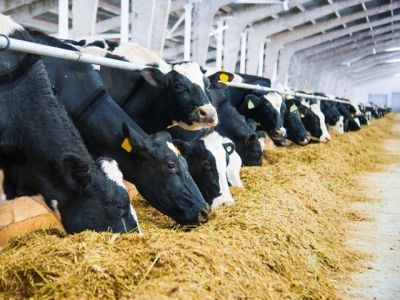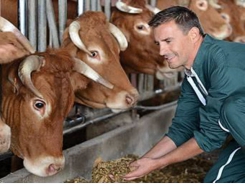Lallemand offers tips to avoid fall slump in dairy cow production

Change from old corn silage to freshly cut forage can create problems
Dairy cows commonly fail to reach their full production potential during the fall. This is often caused by an abrupt change from old corn silage to freshly cut forage or recently fermented corn silage.
“A slump in production can be costly for a farm and frustrating for producers,” says Renato Schmidt, Ph.D., technical services – forage, Lallemand Animal Nutrition. “We often see otherwise unexplained decreases in milk production or an inability to reach production targets in the fall as producers switch from old silage to new material. This slump can also affect herd health with signs such as a decreased feed intake or loose manure.”
Contributing factors to a fall slump may include:
- Lower starch digestibility in fresh silage or forage. When harvested above 35 percent dry matter (DM), the starch in corn starts to become less digestible. Flint varieties also have lower starch digestibility than floury ones.
- High levels of fermentable sugars. Fresh forages can contain high levels of fermentable sugars, which can contribute to sub-acute rumen acidosis (SARA) in a herd.
- Differences in DM and nutrient content. Silages normally present a different composition from one silo to the next, and from one year to the next.
To avoid a fall slump, Schmidt recommends four strategies:
- Ideally allow silage to ensile for at least four months before feeding. As silage spends additional weeks in storage, the starch becomes more digestible.
- Change silos gradually over a two-week period.
- Test new forages for DM and nutrient content. If necessary, the ration should be adjusted to reflect the changing composition.
- Use a proven silage inoculant containing enzymes to help break down plant fiber and thus aid in fiber digestibility.
- Thinking ahead to next year, Schmidt recommends considering an inoculant that will help maintain feed quality. The strain Lactobacillus buchneri 40788 is the only active bacteria reviewed by the FDA in preventing heating and spoilage – two factors that can greatly affect silage quality.
“Planning ahead and making gradual changes in feeding can help keep milk production steady and maintain cattle health,” Schmidt says. “Ultimately, it helps keep profits steady for the farm.”
Có thể bạn quan tâm
Phần mềm

Phối trộn thức ăn chăn nuôi

Pha dung dịch thủy canh

Định mức cho tôm ăn

Phối trộn phân bón NPK

Xác định tỷ lệ tôm sống

Chuyển đổi đơn vị phân bón

Xác định công suất sục khí

Chuyển đổi đơn vị tôm

Tính diện tích nhà kính

Tính thể tích ao hồ



 Fiber-degrading enzymes increase dairy cow milk production
Fiber-degrading enzymes increase dairy cow milk production  The high cost of metabolic diseases in dairy…
The high cost of metabolic diseases in dairy…